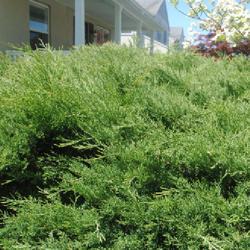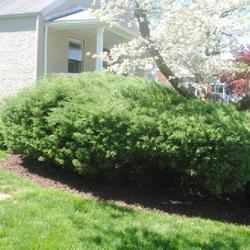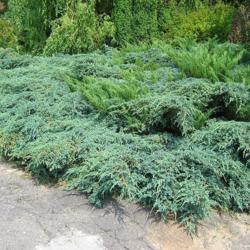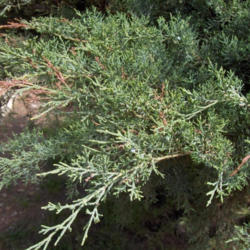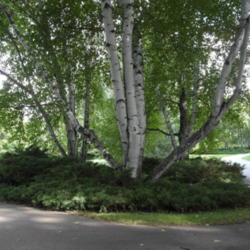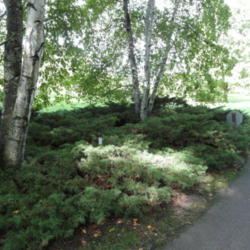| Plant Habit: | Shrub |
| Life cycle: | Perennial |
| Sun Requirements: | Full Sun Full Sun to Partial Shade |
| Water Preferences: | Mesic Dry Mesic |
| Soil pH Preferences: | Neutral (6.6 – 7.3) Slightly alkaline (7.4 – 7.8) |
| Minimum cold hardiness: | Zone 4a -34.4 °C (-30 °F) to -31.7 °C (-25 °F) |
| Plant Height: | 5 to 7 feet |
| Plant Spread: | 8 to 10 feet |
| Leaves: | Evergreen Needled |
| Fruit: | Other: tiny bluish waxy covered cones |
| Fruiting Time: | Late summer or early fall Fall Late fall or early winter |
| Resistances: | Deer Resistant Rabbit Resistant Drought tolerant Salt tolerant |
| Propagation: Other methods: | Cuttings: Stem |
| Pollinators: | Wind |
| Miscellaneous: | Tolerates poor soil Dioecious |
| Parentage: | Juniperus chinensis x Juniperus sabina |
